News
Interview: ‘Purge’ Creator James DeMonaco Talks ‘The First Purge’
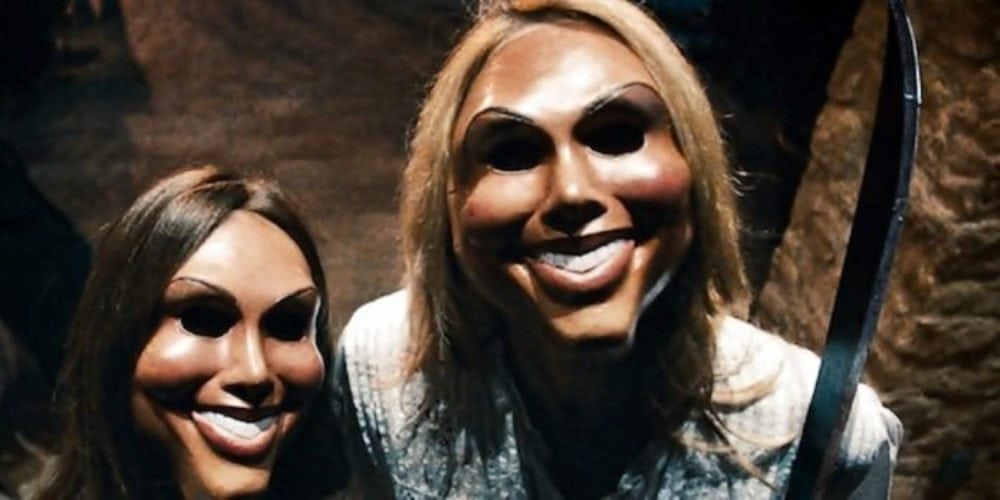
After making three Purge films, series creator James DeMonaco decided that it was time to go back to the beginning and explore how the Purge concept was born. In The First Purge, the fourth film in the Purge series, viewers will find out how the United States decided that the Purge was a solution to its problems.
In this interview, which was conducted via email in April, DeMonaco explains the origins of the Purge concept and details his vision for the future of the Purge series. The First Purge opens in theaters on July 4.
DG: James, what inspired you to make a prequel film?
JD: How a country could get to a point where something like the Purge was a viable solution to its problems seemed very interesting to me – especially in these tumultuous times. Fear would seem to be the motivating factor – as it has in history – for any citizenry to accept such a nefarious solution. And the selling of fear was so integral to the Trump campaign that it seemed to coincide with the NFFA (the governing party in the Purge films) and how they use fear to sell the Purge to America. So, ultimately, I liked the parallels to what was happening today in our country.
DG: James, for those people who have seen the first three films, who are intimately familiar with the Purge mythology, what questions did you want to answer in this film?
JD: How it began. Where it began. The First purge is depicted in the film – but it is not a country–wide Purge. It’s an “experimental” purge – to see if it works – on the borough of Staten Island in Nyc. The NFFA is hoping for a lot of “participation” in the evening so that they could sell this ‘solution’ on a country-wide scale in future years. Hopefully, people we see why it all started, the government’s reasoning behind it all – and its manipulation. And ultimately how the NFFA and its politics mirror our current regime.

DG: How would you describe the process by which America embraces the Purge concept, and how would you describe the human dynamic that exists in this film amongst the main characters?
JD: Without giving too much away, what we learn in the First Purge is that America (specifically Staten Islanders who are representing America in this film – as they are part of this initial “experiment”), don’t actually embrace the Purge. There is monetary incentive to participate in this scientific experiment as it’s called – hence we see that there’s a financial manipulation of lower income Staten Islanders to be a part of the Purge. Again, we explore government manipulation, especially of America’s most underprivileged.
As for the human dynamic, our main two characters are ex-lovers – both grew up in the lower-income part of Staten Island, and both very different. Nya is a social activist who’s a leading voice in her neighborhood against the upcoming Purge and her ex is Dmitri, the local drug lord – a man with violence in his heart who, in the beginning of the film, is only looking out for himself. Things change for him when he sees what the Purge really is and its impact on their world.
DG: After directing the first three films, why did you select Gerard McMurray to direct this film, and what did Gerard bring to this film that’s unique from other directors you might have chosen for this film, including yourself?
JD: I always wanted to write about the initial, experimental Purge, but after writing and directing three purge film in 5 years I was ready to hand over the directing duties. Someone sent me Gerard’s film Burning Sands, which I loved. Gerard was also a big fan of the Purge films and right after our first conversation I knew he was the right person for the job. He saw the Purge as a metaphor for the plight of minorities in America. Gerard also lived through Hurricane Katrina – the government’s mishandling of that situation, and its treatment of lower income citizens of New Orleans was something that informed my writing of the original Purge. Ultimately, Gerard saw the Purge films as I see them – as genre films, action/sci-fi/horror – but also as socio-political commentaries about race, and class and gun control in our country.
DG: James, aside from the prequel storyline, what do you think sets this film apart from the previous Purge films?
JD: Character and tone. I think this film explores characters and their relationships with each other and with their neighborhood and government and their civic duty in a way that we didn’t see in the first three films. Also, tone as Gerard brings a very different tone here – he’s created an authentic world and neighborhood that is shattered by the Purge but ultimately fights back and won’t let the government win.
DG: What was the biggest challenge you faced in making this film ?
JD: As with any Purge film, budget constraints – we want the film to feel big but, in comparison with other summer releases, we are, again, a small budget. And, of course the balance between social commentary and genre fun. We never want to be preachy, so we have to find that right balance.
DG: James, how would you describe Marisa Tomei’s role in this film?
JD: Marisa plays the behavioral-psychologist who has conceived of this notion – she is, in fact, the creator of the Purge. But, we quickly learn, she doesn’t work for the NFFA. She doesn’t know, up front, how they will use this conceit and for what purpose. She slowly learns, over the course of the movie, that this idea she had for a societal catharsis through a night of violence is being used for all the wrong reasons – in her opinion.
DG: What do you think audiences will find most compelling and frightening about this film?
JD: I think and hope (and have seen with preview audiences) that they see the parallels with our current regime in the NFFA and its treatment of the poor and its fear-mongering – and they find it very, very scary. They also love the MASKS in the film – and like the previous purge films – are terrified of them – which is great.
DG: James, what did the Buffalo/New York/Staten Island setting bring to this film that was unique from other locations you might have chosen, and how would you describe the landscape, the universe, that exists in this film?
JD: I think it all gave us a sense of a real neighborhood – with real people existing in it. Here, for the first time in the Purge films, we are focused on a single neighborhood – which is fun as we explore its characters and how they co-exist – from the nice people – to the nasty people – and Gerard made that tapestry of characters feel very real.
DG: What is your favorite scene or sequence in this film?
JD: Two scenes stand out for me – a scene in the beginning where our lead female, Nya, confronts our lead male, Dmitri, about his lifestyle and how, like the Purge, he is destroying their community with his drug-dealing and violence. It’s heartfelt and very real. And finally, the action/horror set-piece in our finale – inside a tenement building – it feels like an insane nightmare version of Die Hard – and it’s something we haven’t seen in a Purge film yet.
DG: James, looking ahead, do you feel that the Purge series has perhaps run its course in terms of present day storylines, and is it your intention to have future Purge films follow the prequel timeline that you’re establishing with this film?
JD: I’m not exactly sure where to go next in the film series – we have some ideas but nothing solid and until the audience tells us they want more, I feel like it’s not cool to be assuming they do. But we are exploring the Purge in a TV series, which will be coming out later this year – we start shooting in a month – for USA/Sy Fy. And what’s great about that is that the real estate of TV – ten hours of screen time – allows us to explore – in a much more complex way – why someone would ever use violence to solve a problem. Using a flashback structure we explore the lives of people experiencing the purge and we see how they got to where they are on this particular purge night. It’s a great format to explore the Purge conceit.
DG: James, after making four Purge films, how would you describe the journey you’ve taken with this series, from the beginning to the present?
JD: Insane, terrifying and something that has opened my eyes and made me very aware of the government’s treatment of certain parts of our citizenry.
'Civil War' Review: Is It Worth Watching?
Follow our new YouTube channel "Mysteries and Movies" here.

Lists
Thrills and Chills: Ranking ‘Radio Silence’ Films from Bloody Brilliant to Just Bloody
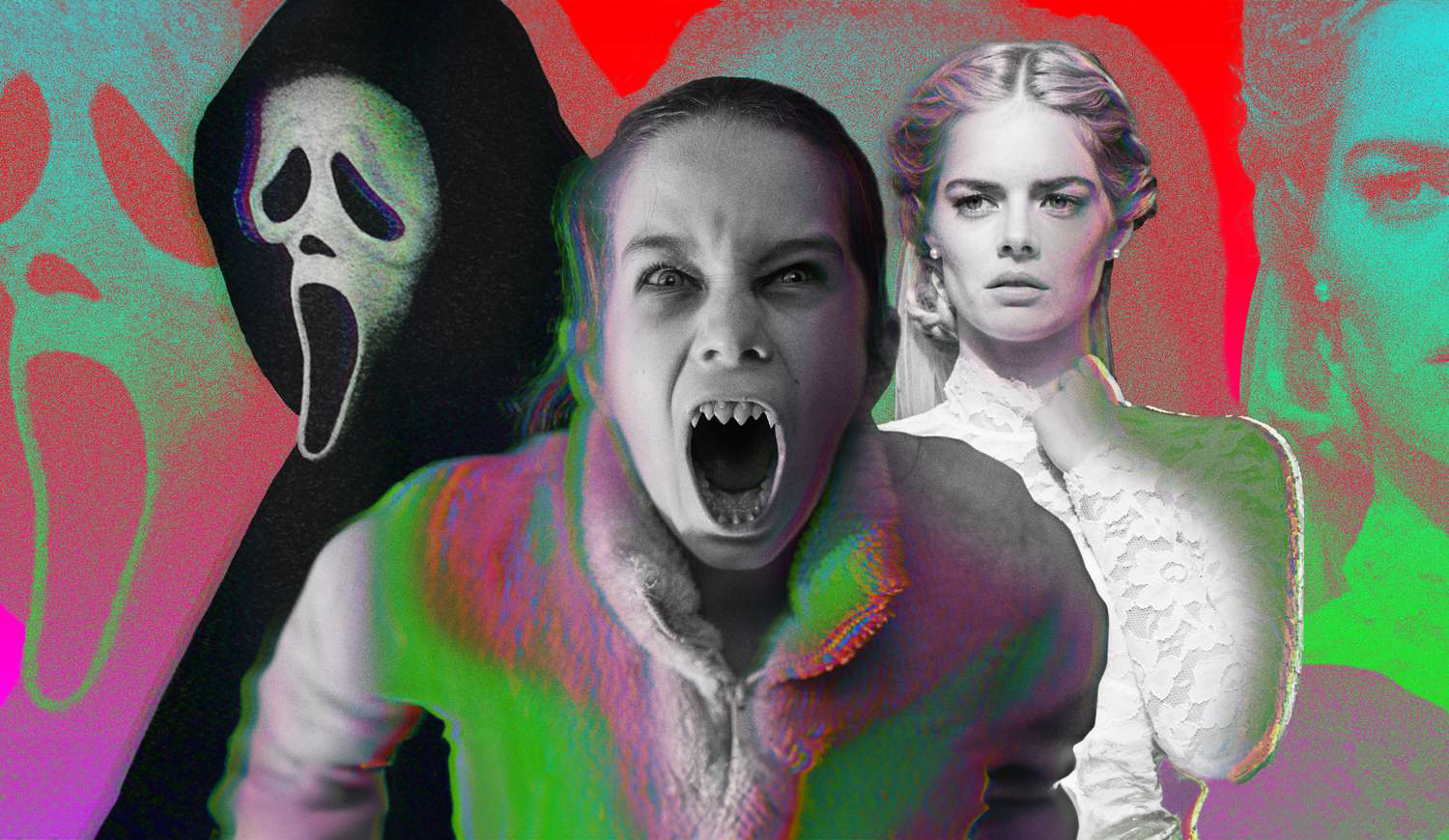
Matt Bettinelli-Olpin, Tyler Gillett, and Chad Villella are all filmmakers under the collective label called Radio Silence. Bettinelli-Olpin and Gillett are the primary directors under that moniker while Villella produces.
They have gained popularity over the past 13 years and their films have become known as having a certain Radio Silence “signature.” They are bloody, usually contain monsters, and have breakneck action sequences. Their recent film Abigail exemplifies that signature and is perhaps their best film yet. They are currently working on a reboot of John Carpenter’s Escape From New York.
We thought we would go through the list of projects they have directed and rank them from high to low. None of the movies and shorts on this list are bad, they all have their merits. These rankings from top to bottom are just ones we felt showcased their talents the best.
We didn’t include movies they produced but didn’t direct.
#1. Abigail
An update to the second film on this list, Abagail is the natural progression of Radio Silence’s love of lockdown horror. It follows in pretty much the same footsteps of Ready or Not, but manages to go one better — make it about vampires.
#2. Ready or Not
This film put Radio Silence on the map. While not as successful at the box office as some of their other films, Ready or Not proved that the team could step outside their limited anthology space and create a fun, thrilling, and bloody adventure-length film.
#3. Scream (2022)
While Scream will always be a polarizing franchise, this prequel, sequel, reboot — however you want to label it showed just how much Radio Silence knew the source material. It wasn’t lazy or cash-grabby, just a good time with legendary characters we love and new ones who grew on us.
#4 Southbound (The Way Out)
Radio Silence tosses their found footage modus operandi for this anthology film. Responsible for the bookend stories, they create a terrifying world in their segment titled The Way Out, which involves strange floating beings and some sort of time loop. It’s kind of the first time we see their work without a shaky cam. If we were to rank this entire film, it would remain at this position on the list.
#5. V/H/S (10/31/98)
The film that started it all for Radio Silence. Or should we say the segment that started it all. Even though this isn’t feature-length what they managed to do with the time they had was very good. Their chapter was titled 10/31/98, a found-footage short involving a group of friends who crash what they think is a staged exorcism only to learn not to assume things on Halloween night.
#6. Scream VI
Cranking up the action, moving to the big city and letting Ghostface use a shotgun, Scream VI turned the franchise on its head. Like their first one, this film played with canon and managed to win over a lot of fans in its direction, but alienated others for coloring too far outside the lines of Wes Craven’s beloved series. If any sequel was showing how the trope was going stale it was Scream VI, but it managed to squeeze some fresh blood out of this nearly three-decade mainstay.
#7. Devil’s Due
Fairly underrated, this, Radio Silence’s first feature-length film, is a sampler of things they took from V/H/S. It was filmed in an omnipresent found footage style, showcasing a form of possession, and features clueless men. Since this was their first bonafide major studio job it’s a wonderful touchstone to see how far they have come with their storytelling.
'Civil War' Review: Is It Worth Watching?
Follow our new YouTube channel "Mysteries and Movies" here.
News
Perhaps the Scariest, Most Disturbing Series of The Year

You may have never heard of Richard Gadd, but that will probably change after this month. His mini-series Baby Reindeer just hit Netflix and it’s a terrifying deep dive into abuse, addiction, and mental illness. What is even scarier is that it’s based on Gadd’s real-life hardships.
The crux of the story is about a man named Donny Dunn played by Gadd who wants to be a stand-up comedian, but it’s not working out so well thanks to stage fright stemming from his insecurity.
One day at his day job he meets a woman named Martha, played to unhinged perfection by Jessica Gunning, who is instantly charmed by Donny’s kindness and good looks. It doesn’t take long before she nicknames him “Baby Reindeer” and begins to relentlessly stalk him. But that is just the apex of Donny’s problems, he has his own incredibly disturbing issues.
This mini-series should come with a lot of triggers, so just be warned it is not for the faint of heart. The horrors here don’t come from blood and gore, but from physical and mental abuse that go beyond any physiological thriller you may have ever seen.
“It’s very emotionally true, obviously: I was severely stalked and severely abused,” Gadd said to People, explaining why he changed some aspects of the story. “But we wanted it to exist in the sphere of art, as well as protect the people it’s based on.”
The series has gained momentum thanks to positive word-of-mouth, and Gadd is getting used to the notoriety.
“It’s clearly struck a chord,” he told The Guardian. “I really did believe in it, but it’s taken off so quickly that I do feel a bit windswept.”
You can stream Baby Reindeer on Netflix right now.
If you or someone you know has been sexually assaulted, please contact the National Sexual Assault Hotline at 1-800-656-HOPE (4673) or go to rainn.org.
'Civil War' Review: Is It Worth Watching?
Follow our new YouTube channel "Mysteries and Movies" here.
Movies
The Original ‘Beetlejuice’ Sequel Had an Interesting Location
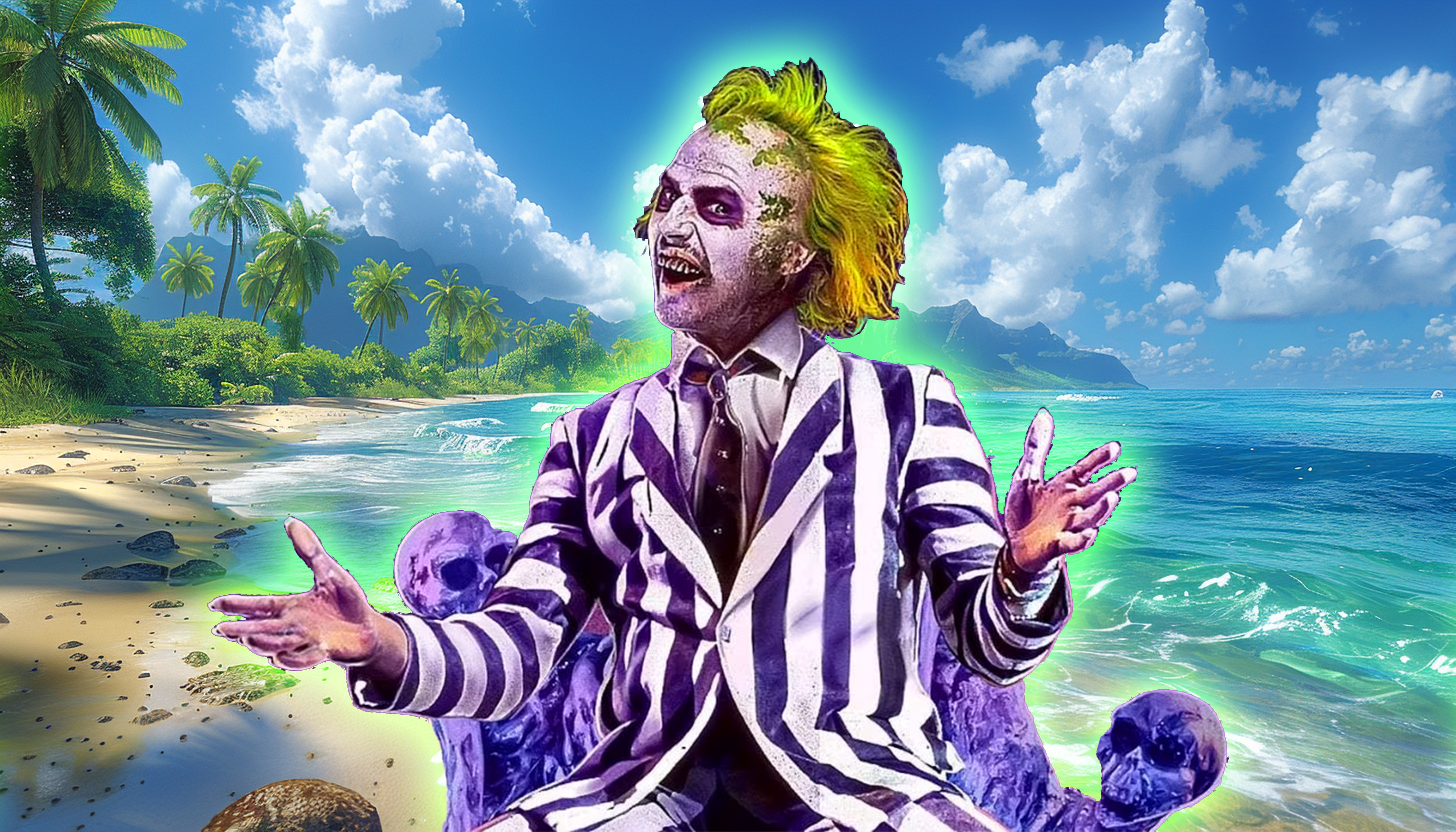
Back in the late ’80s and early ’90s sequels to hit movies weren’t as linear as they are today. It was more like “let’s re-do the situation but in a different location.” Remember Speed 2, or National Lampoon’s European Vacation? Even Aliens, as good as it is, follows a lot of the plot points of the original; people stuck on a ship, an android, a little girl in peril instead of a cat. So it makes sense that one of the most popular supernatural comedies of all time, Beetlejuice would follow the same pattern.
In 1991 Tim Burton was interested in doing a sequel to his 1988 original, it was called Beetlejuice Goes Hawaiian:
“The Deetz family moves to Hawaii to develop a resort. Construction begins, and it’s quickly discovered that the hotel will be sitting on top of an ancient burial ground. Beetlejuice comes in to save the day.”
Burton liked the script but wanted some re-writes so he asked then-hot screenwriter Daniel Waters who had just got done contributing to Heathers. He passed on the opportunity so producer David Geffen offered it to Troop Beverly Hills scribe Pamela Norris to no avail.
Eventually, Warner Bros. asked Kevin Smith to punch up Beetlejuice Goes Hawaiian, he scoffed at the idea, saying, “Didn’t we say all we needed to say in the first Beetlejuice? Must we go tropical?”
Nine years later the sequel was killed. The studio said Winona Ryder was now too old for the part and an entire re-cast needed to happen. But Burton never gave up, there were a lot of directions he wanted to take his characters, including a Disney crossover.
“We talked about lots of different things,” the director said in Entertainment Weekly. “That was early on when we were going, Beetlejuice and the Haunted Mansion, Beetlejuice Goes West, whatever. Lots of things came up.”
Fast-forward to 2011 when another script was pitched for a sequel. This time the writer of Burton’s Dark Shadows, Seth Grahame-Smith was hired and he wanted to make sure the story wasn’t a cash-grabbing remake or reboot. Four years later, in 2015, a script was approved with both Ryder and Keaton saying they would return to their respective roles. In 2017 that script was revamped and then eventually shelved in 2019.
During the time the sequel script was being tossed around in Hollywood, in 2016 an artist named Alex Murillo posted what looked like one-sheets for a Beetlejuice sequel. Although they were fabricated and had no affiliation with Warner Bros. people thought they were real.
Perhaps the virality of the artwork sparked interest in a Beetlejuice sequel once again, and finally, it was confirmed in 2022 Beetlejuice 2 had a green light from a script written by Wednesday writers Alfred Gough and Miles Millar. The star of that series Jenna Ortega signed on to the new movie with filming starting in 2023. It was also confirmed that Danny Elfman would return to do the score.
Burton and Keaton agreed that the new film titled Beetlejuice, Beetlejuice wouldn’t rely on CGI or other other forms of technology. They wanted the film to feel “handmade.” The film wrapped in November 2023.
It’s been over three decades to come up with a sequel to Beetlejuice. Hopefully, since they said aloha to Beetlejuice Goes Hawaiian there has been enough time and creativity to ensure Beetlejuice, Beetlejuice will not only honor the characters, but fans of the original.
Beetlejuice, Beetlejuice will open theatrically on September 6.
'Civil War' Review: Is It Worth Watching?
Follow our new YouTube channel "Mysteries and Movies" here.
-

 News6 days ago
News6 days agoWoman Brings Corpse Into Bank To Sign Loan Papers
-

 News7 days ago
News7 days agoHome Depot’s 12-Foot Skeleton Returns with a New Friend, Plus New Life-Size Prop from Spirit Halloween
-

 News5 days ago
News5 days agoBrad Dourif Says He’s Retiring Except For One Important Role
-

 Strange and Unusual5 days ago
Strange and Unusual5 days agoMan Arrested for Allegedly Taking a Severed Leg From Crash Site And Eating It
-

 Movies6 days ago
Movies6 days agoPart Concert, Part Horror Movie M. Night Shyamalan’s ‘Trap’ Trailer Released
-

 Movies7 days ago
Movies7 days ago‘The Strangers’ Invaded Coachella in Instagramable PR Stunt
-

 Movies6 days ago
Movies6 days agoAnother Creepy Spider Movie Hits Shudder This Month
-
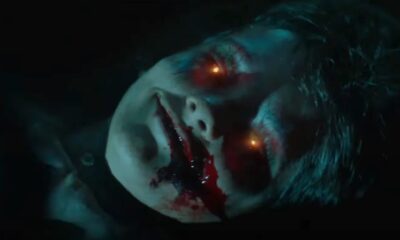
 Movies7 days ago
Movies7 days agoRenny Harlin’s Recent Horror Movie ‘Refuge’ Releasing in U.S. This Month
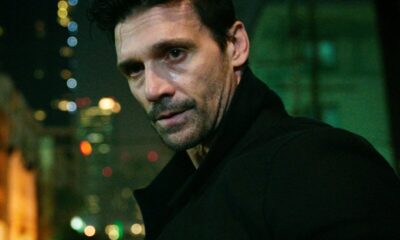

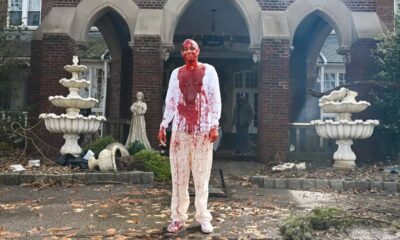





















You must be logged in to post a comment Login